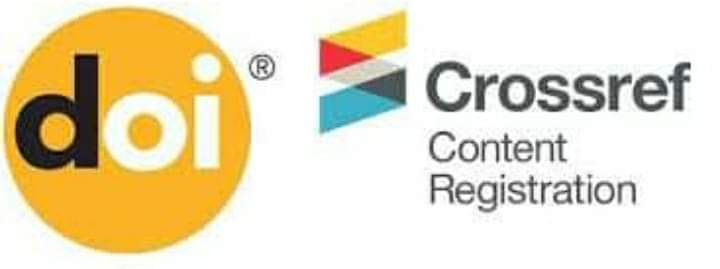Field proving of a liquid displacement meter using Bi-directional Pipe Provers in Custody Transfer applications; case study of Libyan Zueitina Oil Port
Keywords:
Custody Transfer applications, Bi-Directional Pipe Provers, Meter-proving processAbstract
In this paper, a field study is conducted on proving a positive displacement meter with bi-directional pipe provers to determine the repeatability of the meter's generated pulses and the deviation of the Meter Factor percentage during the Meter Proving process at Zueitina Oil Port in Libya. Equipment, procedures, requirements, national and international standards, and precautions that will ensure accurate metering of fluids were considered.
References
References
Lynnworth, L. C., & Liu, Y. (2006). Ultrasonic flowmeters: Half-century progress report, 1955–
Ultrasonics, 44, e1371-e1378.
Tawackolian, Karsten, Oliver Büker, Jankees Hogendoorn, and Thomas Lederer. "Calibration
of an ultrasonic flow meter for hot water." Flow Measurement and Instrumentation 30 (2013):
-173.
Anklin, M., Drahm, W., & Rieder, A. (2006). Coriolis mass flowmeters: Overview of the
current state of the art and latest research. Flow Measurement and Instrumentation, 17(6),
-323.
Wang, T., & Baker, R. (2014). Coriolis flowmeters: a review of developments over the past 20
years, and an assessment of the state of the art and likely future directions. Flow
Measurement and Instrumentation, 40, 99-123.
Wang, T., & Hussain, Y. (2006). Investigation of the batch measurement errors for singlestraight tube Coriolis mass flowmeters. Flow measurement and Instrumentation, 17(6), 383-
Kalotay, P. (1999). Density and viscosity monitoring systems using Coriolis flow meters. ISA
transactions, 38(4), 303-310.
Samer, G., & Fan, S. (2010). Modeling of Coriolis mass flow meter of a general plane-shape
pipe. Flow Measurement and Instrumentation, 21(1), 40-47.
“Flow Measurement Uncertainty and Data Reconciliation” (2008), National measurement
System (NEL).
JCGM 100:2008 GUM 1995 with minor corrections, Evaluation of measurement data – Guide
to the expression of uncertainty in measurement.
API MPMS 4.1: "Manual of Petroleum Measurement Standards - Chapter 4: Proving Systems,
Section 1 - Introduction," American Petroleum Institute, Washington DC, 2005;
API Manual of Petroleum Measurement Standards Chapter 4.8 Operation of Proving Systems
- Second Edition", American Petroleum Institute, Washington DC, 2013;M. Buaisha and E. Shawail
.
Vol. 3(2), October 2024
libyan Hydrocarbon’s National Code for Dynamic &Statıc Measurement Systems - Custody,
Fıscal, Allocatıon,and Productıon Measurements Applıcatıons - National Oil Corporation
(NOC) – Libya- General Department of Inspection & Measurement, October 2020;
ISO 9001:2015 Standard- quality management system - NOC – Inspection & Measurement
General Directorate- LIBYA, December 2023;
API MPMS 12.2: "Manua' of Petroleum Measurement Standards - Chapter 12: Calculation of
Petroleum Quantities, Section 2 - Calculation of Petroleum Quantities Using Dynamic
Measurement Methods and Volumetric Correction Factors, II Part 1-5, American Petroleum
Institute, Washington DC, 1995 (Part 1),2003 (Part 2), 1998 (Part 3), 1997 (Part 4), 2001 (Part
;
API MPMS 4.2: "Manual of Petroleum Measurement Standards - Chapter ProvingSystems,
Section 2 - Displacement Provers," American PetroleumInstitute, Washington DC, 2003;
"Manual of Petroleum Measurement Standards - Chapter 5: Metering,Section 8 -
Measurement of Liquid Hydrocarbons using UltrasonicFlow Meters," American Petroleum
Institute, Washington DC, 2011;
Manual of Petroleum Measurement Standards - Chapter 11: Physical Properties Data, Section
- Temperature and Pressure Volume Correction Factors (VCF) Software for Generalized
Crude Oils,' Refined Products, and Lubricating Oils," American Petroleum Institute,
Washington DC, 2004;
"Manua' of Petroleum Measurement Standards - Chapter 12: Calculation of Petroleum
Quantities, Section 2 - Calculation of Petroleum Quantities Using Dynamic Measurement
Methods and Volumetric Correction Factors, II Part 1-5, American Petroleum Institute,
Washington DC, 1995 (Part 1),2003 (Part 2), 1998 (Part 3), 1997 (Part 4), 2001 (Part 5);





